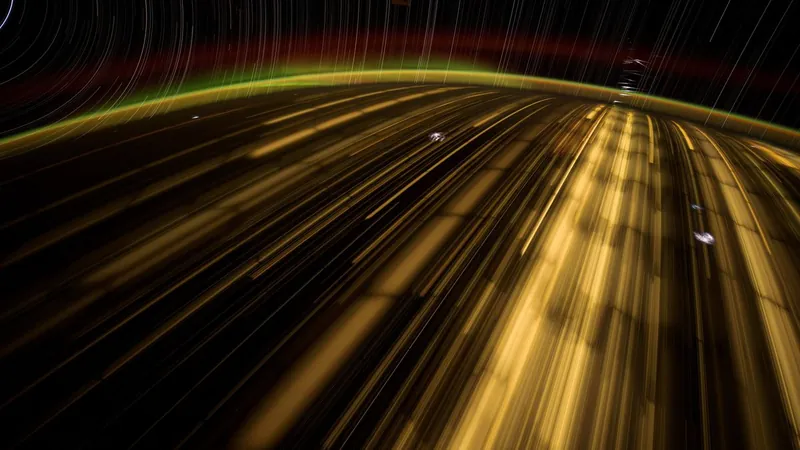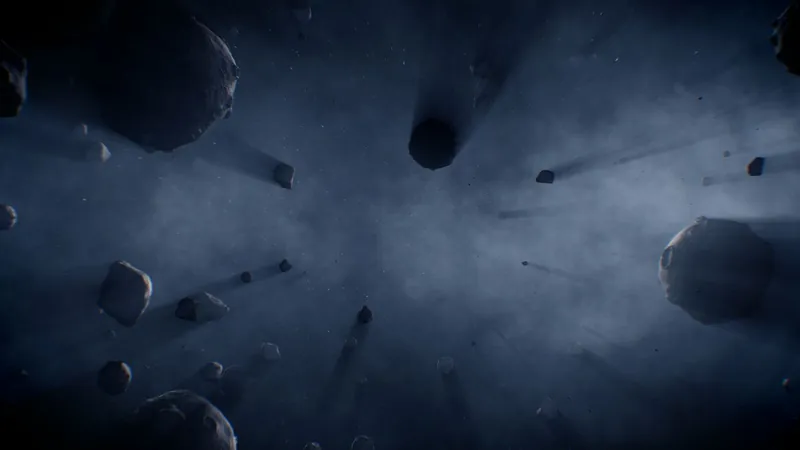
Astronaut Captures Stunning Timelapse of SpaceX Starlink Satellites from ISS
2024-11-19
Author: Sarah
Incredible Showcase of Modern Space Technology
In an incredible showcase of modern space technology, veteran NASA astronaut Don Pettit recently captured mesmerizing images of SpaceX’s Starlink satellites from aboard the International Space Station (ISS). Utilizing timelapse photography, Pettit recorded these satellites as dazzling white flashes coursing through the night sky, visible exclusively from the vantage point of space.
Pettit's Reflections on the Starlink Satellites
On November 15, Pettit shared his thoughts on social media platform X (formerly Twitter), describing the Starlink satellites as reminiscent of the famous monolith from Stanley Kubrick's classic film, "2001: A Space Odyssey." He compared their appearance to a miniature monolith with a large flat surface pointing toward Earth and solar panels protruding outward like the distinctive fin of a dimetrodon—an ancient creature that roamed the Earth millions of years ago.
SpaceX's Vision for Starlink
This marks Pettit's fourth journey into space, and he noted that these Starlink satellites were "strikingly bright from orbit," although their reflections are not aimed back at our planet. With over 6,600 Starlink satellites currently operational in low Earth orbit, SpaceX aims to expand this fleet significantly—a staggering total of 42,000 satellites is envisioned for the future.
Concerns from Astronomers
Despite the technological marvel of providing global internet coverage, astronomers have raised alarms about the brightness and visibility of the Starlink megaconstellation. SpaceX has responded by implementing strategies to reduce their glare, such as altering satellite orientation and applying special coatings. Nevertheless, concerns regarding their impact on astronomical observations remain prevalent within the scientific community.
Specific Lighting Conditions for Capturing the Satellites
Pettit also elucidated that the Starlink satellites can only be captured under specific lighting conditions, appearing as "wonky streaks" of light in his images. According to his post, these visuals represent the satellites reflecting sunlight off their solar panels during twilight, specifically visible "from 5 to 18 degrees preceding or trailing the sun."
The Ongoing Conversation about Night Skies
As space exploration continues to advance, these captivating images not only highlight the thrilling developments in satellite technology but also underscore the ongoing conversation about preserving our night skies for future generations.



 Brasil (PT)
Brasil (PT)
 Canada (EN)
Canada (EN)
 Chile (ES)
Chile (ES)
 España (ES)
España (ES)
 France (FR)
France (FR)
 Hong Kong (EN)
Hong Kong (EN)
 Italia (IT)
Italia (IT)
 日本 (JA)
日本 (JA)
 Magyarország (HU)
Magyarország (HU)
 Norge (NO)
Norge (NO)
 Polska (PL)
Polska (PL)
 Schweiz (DE)
Schweiz (DE)
 Singapore (EN)
Singapore (EN)
 Sverige (SV)
Sverige (SV)
 Suomi (FI)
Suomi (FI)
 Türkiye (TR)
Türkiye (TR)